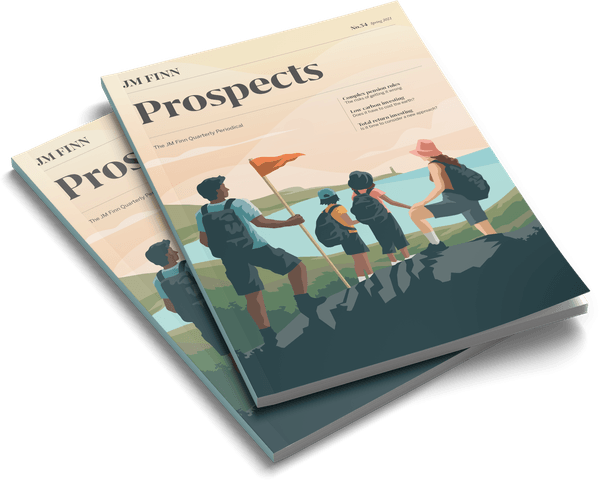Unsurprisingly, a new bear market ensued. More surprisingly, it was short lived and, as I write, the MSCI World Index has just entered new high ground, buoyed by a strong US market. Turbulence seems an appropriate description of what we investors have been going through.
Why the new found enthusiasm? After all, we are far from out of the woods yet, with the vaccine progress still in its early stages, new variants of coronavirus popping up all the time and government borrowing soaring to heights never known in peace time. Yet a recent survey conducted by Bank of America Merrill Lynch of more than 200 fund managers around the world concluded that the overall attitude to markets was very bullish, with uninvested cash levels falling.
Looking at the various pieces of macro research that come across our desks, there are two themes that are being widely picked up – resurgent inflation and pent-up demand. Neither are necessarily bad for equity markets, though inflation has been a cause of concern in the past.
However, it is probably safe to say that this time is different, despite the fact that the late Sir John Templeton once said these were the four most dangerous words in the investment world.
Despite copious money printing, the cost of living did not rise sharply as many had feared.
The background to the belief that inflation might rear its ugly head again lies with the considerable quantitative easing being undertaken by central banks around the world. This was a fear when this particular exercise in staving off economic disaster was introduced in the wake of the financial crisis of 2008. As it happens, despite copious money printing, the cost of living did not rise sharply as many had feared. This has almost certainly given encouragement to central bankers to adopt this approach in our current crisis.
This time, though, the stakes are even higher and the sums mooted as required to shore up those economies suffering from the effects of the pandemic are eye-wateringly large. In the US, President Biden has unveiled a near $2 trillion package of aid to counter the economic downturn. Even the Fed believes this could well seep into higher prices, but appear unwilling to take any action that might dilute the efficacy of these measures. Back home, inflation figures disclosed a modest, but unexpected rise, though remaining well below the Bank of England’s target of 2%. Economists point to rising unemployment and lower incomes as likely to put a cap on any inflationary increase but, in some measure, this is where the second theme starts to make itself felt. With the ability to spend money during the various lockdowns that have taken place severely restricted, is it any wonder that savings ratios have risen during the pandemic.
The bullish argument for a rapid economic recovery rests very much on these savings translating into spending as this pent-up demand is unleashed once lockdowns have been consigned to history. Indeed, the Bank of England’s chief economist, Andy Haldane, remarked that the UK economy “is poised like a coiled spring”. Certainly, there is plenty of evidence that consumer habits revert to the previous normal after a shock to the system. Still, this has been a lengthy and dramatic change to our usual spending patterns, with all the possible disruption to consumer habits that might result.
So, it could be that the new normal will look very different to that which applied in the past. Some of the likely changes are already well signalled. Lockdowns have hastened the move towards internet shopping and, while shops may be able to entice some consumers back, it is probable that many will continue to buy more goods on-line than in the past. This has implications both for the future of our high streets and for governments’ taxation policies.
As for inflation, I have yet to find anyone who believes any uplift in the cost of living will be anything other than temporary. High unemployment and lower incomes for many should put a cap on demand. That is not to say that an economic rebound could be headed off by a more cautious approach to spending, but perhaps the coiled spring will unwind more slowly than some expect. Whatever the outcome, a slower and steadier return to our economic norm may be just what the market needs to bring an end to recent turbulence. And don’t forget that, if inflation persists for longer than expected, it does have the effect of devaluing debt – of which there is a lot around right now.




